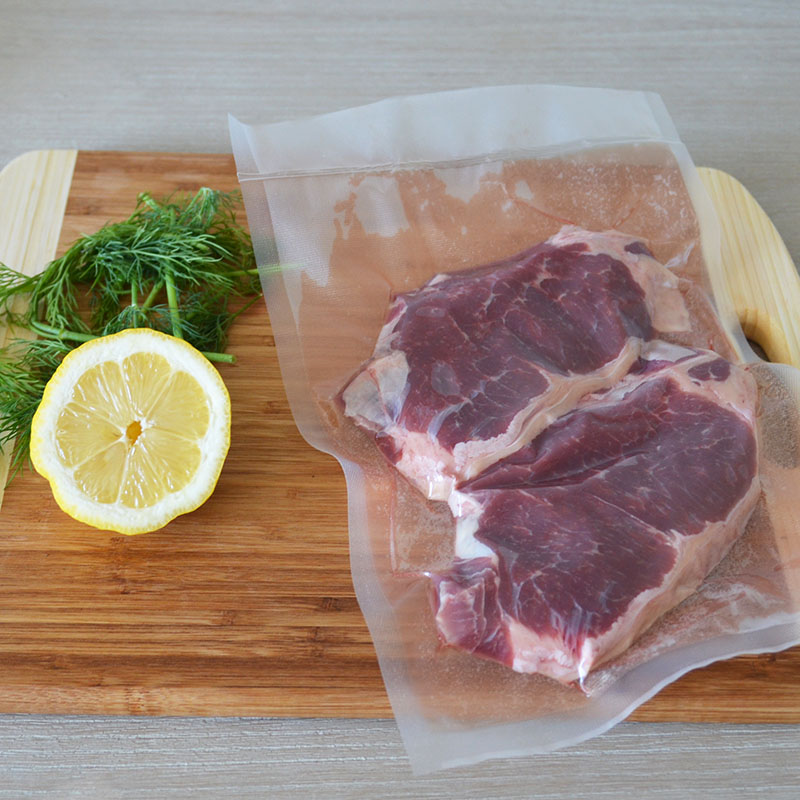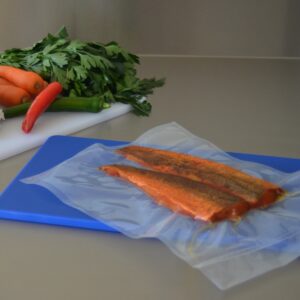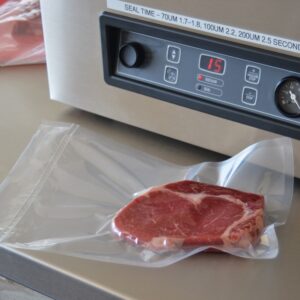The 2 different ways to make Vacuum Sealing Bags
In flexible plastic manufacturing there are 2 ways to make vacuum bags
- Extrusion
- Lamination
Extrusion can be compared to blowing bubble gum, the plastic for the vacuum sealing bags is blown with 2 different resins, normal plastic and barrier resin.
Lamination is like gluing different sheets of plastic on top of each other using normal plastic and barrier plastic.
Vacuum sealer bags are made by using lamination.
The reason for this is that the only way to make channels in the bags, is by using laminated films. The channels are embossed into the film, creating channels through which the air is pulled out.
Vacuum Sealer Bags can also be referred to as Channel Bags
This is also the reason why Vacuum Sealer Bags are referred to as Channel bags. There are channels in the film, literally as streets. To use Vacuum Sealer Bags you must use an outside chamber Vacuum Sealer. These Vacuum Sealers don’t have a strong pump to suck air out a bag. The amount of air to be sucked out of these channels is a lot less than out of the total bag. That’s why the smaller pump from the out of chamber Vacuum Sealer is able to vacuum the bag.
A common reason for Vacuum Sealer Bags to fail is when the channels are closed before the bag is being vacuumed. Means the heating element of the Vacuum Sealer is so hot that the channels (streets) are closed before vacuuming. This is why it is always better to let the Vacuum Sealing Machine cool down before doing the next vacuum seal. If the channels are closed before the vacuuming, the channel bag can’t be vacuumed!
The Vacuum Bags can be made in different microns, but the most common are between 70 and 100. This means that thicker layers of plastic are laminated on top of each other, to make different microns of Vacuum Sealer Bags.



